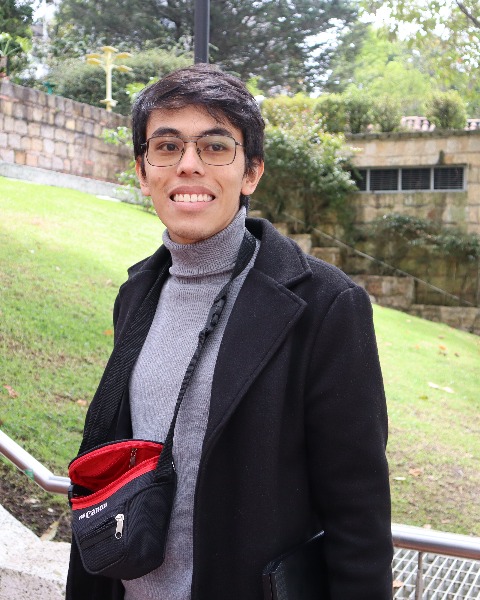Anatomy Education: Technology-Assisted Learning Posters
Poster: Anatomy Education: Technology-Assisted Learning Posters
163 - Second-year Medical Students' Perception Regarding the Use of a Virtual Anatomy Museum for Peer Mentoring in an Anatomy Course
Monday, March 25, 2024
10:15am - 12:15pm US EDT
Location: Sheraton Hall
Poster Board Number: 163
There are separate poster presentation times for odd and even posters.
Odd poster #s – first hour
Even poster #s – second hour
Co-authors:
There are separate poster presentation times for odd and even posters.
Odd poster #s – first hour
Even poster #s – second hour
Co-authors:
Juan Lopez-McCormick, Clinical Professor of Anatomy at Universidad de los Andes School of Medicine, Bogotá, Colombia - University of los Andes; Roberto Rueda-Esteban, Assistant Professor, Anatomy Coordinator, Universidad de los Andes School of Medicine, Bogotá, Colombia. - University of los Andes

Sergio A. Leon-ariza, Bachelor
Student
Universidad de los Andes
Bogota, Cundinamarca, Colombia
Presenting Author(s)
Abstract Body : Introduction and objective
Anatomy museums (AM) are a useful tool for students to interact and learn with real anatomical specimens, yet, specimens often remain stored behind a display case, thus limiting direct interaction. The restriction in the direct availability of the specimens may limit study time, negatively impact student utilization of museum specimens, and limit their interest in preservation techniques. As an alternative, virtual 3D models can be created for a Virtual Museum students may peruse at their leisure. Our aim was to evaluate second-year medical students' perspectives regarding the use of digital 3D models in the context of a peer mentoring system.
Materials and methods
Eighteen models from our AM underwent digitization using photogrammetry. A CANON EOS M200 camera was used to capture 60 to 100 photos of each model, Autodesk Recap Photo was used for automatic digital specimen creation. Three of the models with higher definition and educational value were employed in peer mentoring sessions for second year students taking the anatomy course. An in-depth focus group was carried out, 11 students participated. The focus group inquired about their perception of the model’s utility, perceived impact on subject understanding, and thoughts on virtual museum accessibility. Thematic analysis was conducted on the gathered data.
Results
Three main categories were identified. In the 'technological innovation' realm, participants referred no prior exposure to similar tools. Regarding 'subject learning', students reported enhanced comprehension compared to 2D images, particularly for practical exam readiness, although uncertainty lingered about the equivalence of virtual 3D models to physical learning experiences. Nonetheless, all participants welcomed the digitization, embracing its potential for remote exploration and technical learning.
Conclusion
The utilization of 3D virtual models emerged as a superior complement to peer mentoring, offering a deeper grasp of spatial relationships than 2D images. Digitization and online accessibility proved invaluable, facilitating remote access for students, and enhancing visibility even when students weren’t physically in the AM. This study supports the usefulness of a virtual AM. Further research regarding into the efficacy of virtual versus physical learning experiences is required.
Significance
This research advocates expanded access to AM models for academic use, peer-guided tutorials, and scientific inquiry. Our results may encourage museums to showcase their specimens as 3D artifacts in virtual spaces for their use in education.
Funding
Anatomy Laboratory, Universidad de los Andes School of Medicine.
Anatomy museums (AM) are a useful tool for students to interact and learn with real anatomical specimens, yet, specimens often remain stored behind a display case, thus limiting direct interaction. The restriction in the direct availability of the specimens may limit study time, negatively impact student utilization of museum specimens, and limit their interest in preservation techniques. As an alternative, virtual 3D models can be created for a Virtual Museum students may peruse at their leisure. Our aim was to evaluate second-year medical students' perspectives regarding the use of digital 3D models in the context of a peer mentoring system.
Materials and methods
Eighteen models from our AM underwent digitization using photogrammetry. A CANON EOS M200 camera was used to capture 60 to 100 photos of each model, Autodesk Recap Photo was used for automatic digital specimen creation. Three of the models with higher definition and educational value were employed in peer mentoring sessions for second year students taking the anatomy course. An in-depth focus group was carried out, 11 students participated. The focus group inquired about their perception of the model’s utility, perceived impact on subject understanding, and thoughts on virtual museum accessibility. Thematic analysis was conducted on the gathered data.
Results
Three main categories were identified. In the 'technological innovation' realm, participants referred no prior exposure to similar tools. Regarding 'subject learning', students reported enhanced comprehension compared to 2D images, particularly for practical exam readiness, although uncertainty lingered about the equivalence of virtual 3D models to physical learning experiences. Nonetheless, all participants welcomed the digitization, embracing its potential for remote exploration and technical learning.
Conclusion
The utilization of 3D virtual models emerged as a superior complement to peer mentoring, offering a deeper grasp of spatial relationships than 2D images. Digitization and online accessibility proved invaluable, facilitating remote access for students, and enhancing visibility even when students weren’t physically in the AM. This study supports the usefulness of a virtual AM. Further research regarding into the efficacy of virtual versus physical learning experiences is required.
Significance
This research advocates expanded access to AM models for academic use, peer-guided tutorials, and scientific inquiry. Our results may encourage museums to showcase their specimens as 3D artifacts in virtual spaces for their use in education.
Funding
Anatomy Laboratory, Universidad de los Andes School of Medicine.

